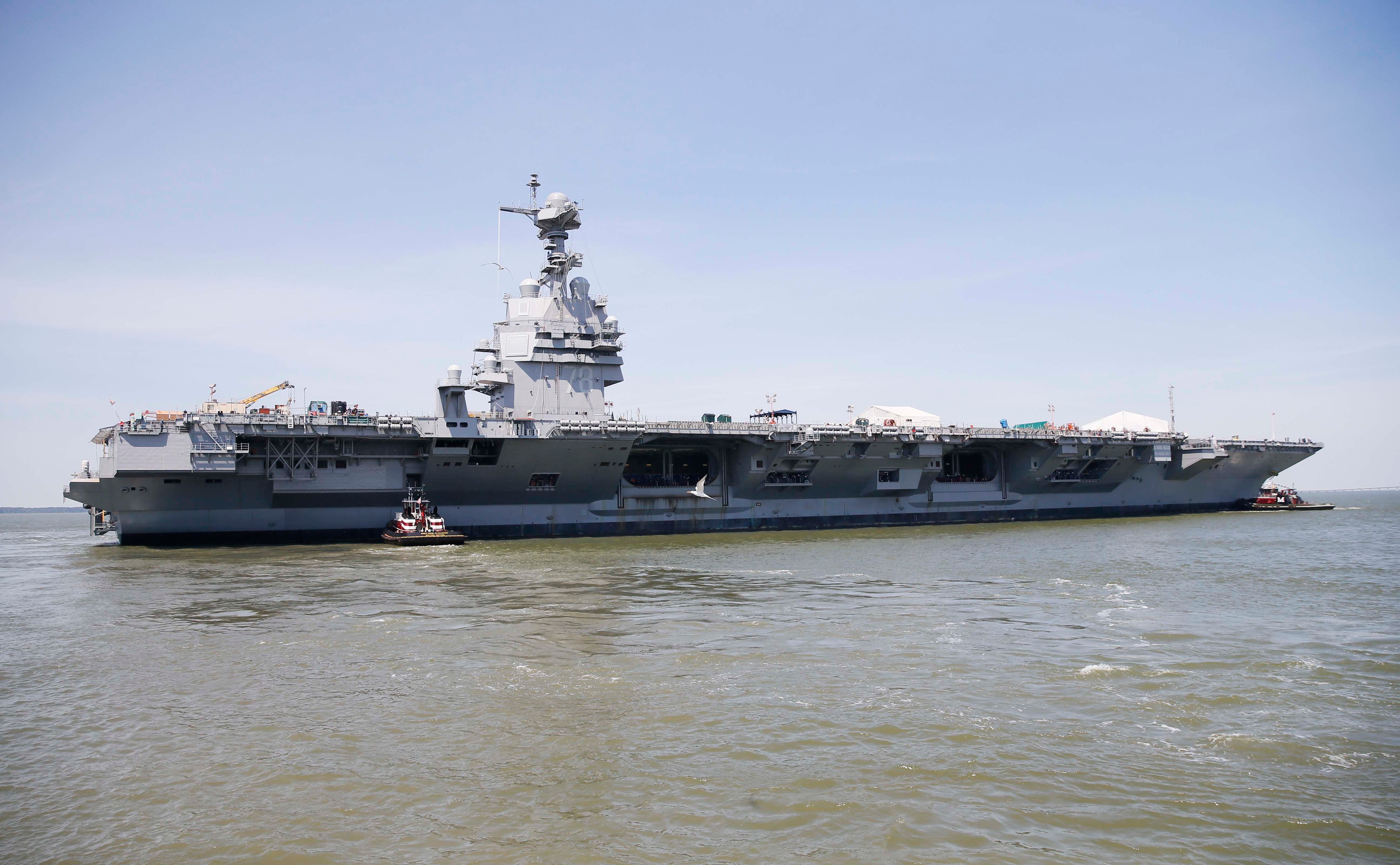There is no question that completion of the new aircraft carrier Gerald R. Ford (CVN 78) is late. That it was going to be late is not a surprise. That a number of technical challenges remain to be resolved is a matter of frustration for several thousand US Navy, government and industry employees – not to mention nearly 900 members of the ship's crew who have been living aboard the almost-so-close-but-not-quite-yet finished carrier since August of last year.
That this stage in the Ford's construction would be difficult was forecast a number of years ago. There are so many new technologies in the ship – a new and far more powerful electrical installation, a new primary radar system, new and previously untried technologies to launch and recover aircraft, and much more – that the Navy originally recommended a tired approach, phasing in new systems across three ships. That scheme was approved by the Pentagon in 2000.
But in 2002, then-Defense Secretary Donald Rumsfeld overrode the Navy's plan, frustrated by what he saw as a Pentagon mired in time-consuming and expensive evolutionary development. Under the banner of transformation, he ordered Adm. Vern Clark, chief of naval operations, to bring forward as many technologies as remotely possible into the first new ship, CVN 78, later named by Congress after President Ford. As has often been reported, the Navy reluctantly complied.
While many inside the Navy had their doubts about the wisdom of trying so much on the first ship, everyone – including the Pentagon's procurement process and most importantly, Congress – approved the plan for what would become the most expensive warship ever built. As such, the project escaped no one's oversight, and from the beginning dozens of reports from the Government Accountability Office, the Pentagon's Director of Operations, Test and Evaluation, the Congressional Budget Office, and many more in and outside government routinely warned of the risks inherent in the ship's timely completion. These warnings virtually repeated the Navy's concerns of the late 1990s and early 2000s. And every year Congress has held hearings where it warns and scolds the Navy that there is too much risk involved.
Now in the fall of 2016, more than 11 years after the first steel was cut for the ship, what many have long feared is partly coming true, even as most of the technical challenges have been met. As of June 2015, the Navy was aiming at taking the ship to sea for acceptance trials in February 2016 with delivery in March 2016 – that's why it was thought to be okay to begin to move the crew aboard in August 2015. But by Sept. 2015 delivery slipped again to May of this year. All the announced dates have come and gone, to the point where the Navy no longer is announcing a date, but refers instead to a goal.
Among the publicly-revealed issues holding up delivery are delays in proving the new advanced arresting gear system to retrieve aircraft, and component issues with the main turbine generators.
The Navy is concerned enough about the arresting gear that chief of naval operations Adm. John Richardson has directed a study examining whether the Enterprise (CVN 80), third ship of the class, should be redesigned with traditional arresting gear. It's too late, officials say, to make design changes in the second ship, John F. Kennedy (CVN 79), which already is under construction. But numerous Navy officials are on record as saying the entire program will be examined to see what changes could and should be made in subsequent ships – if those changes haven't already been made.
But now, as those in the carrier program are focusing on getting the Ford to sea before the end of the year and working to avoid significant cost growth, Frank Kendall, the Pentagon's top acquisition official, wants to conduct another independent review to assess the risks of the carrier's design.
"With the benefit of hindsight, it was clearly premature to include so many unproven technologies in the Gerald R. Ford," he wrote non-presciently to Navy Secretary Ray Mabus Aug. 23. "What we have to determine now is whether it is best to stay the course or adjust our plans."
The latest independent review team has 60 days to complete its work, meaning yet another report which can reliably be predicted to present conclusions remarkably consistent with forecasts at least 14 years old will presented in late October, about two weeks before the presidential election.
Kendall's latest review has outraged senior Navy officials, who argue there are no surprises here, that deep technical reviews are already in progress or planned, and that nothing will be gained from diverting program officials and engineers from working to complete the ship to answering more questions.
In this case, the Navy is right. There is no need at this time for another review. There is no time for a 60-day review to help get the Ford to sea sooner or influence next year's budget or the next ship design.
Not only that, but in four months a new administration will be establishing itself in Washington. There will be a new national security team and likely a new defense secretary. Like all new managers, new executives, and new administrations, the new team is highly likely to order their own review with their own personal stamp – if nothing else it's a proven way to make it clear a new boss is in town -- and the aircraft carrier won't escape scrutiny. The new team is not likely to be handed a report from an incumbent or outgoing official and take it from there.
Whatever noble intentions might lay behind it, Mr. Kendall's latest review is a waste of effort.








